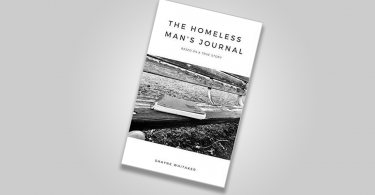While most children enjoy seeing Cinderella’s wicked stepsisters come to a foul end in Disney’s classic animation, few would rejoice if that scene involved pigeons pecking out their eyes. Yet, that is how the Brothers Grimm version ended. This begs the question: how have the stories we tell our children – and therefore the way we present the world to them – changed?
Children are exposed to books and told the importance of reading from an extraordinarily young age. This exposure certainly has many an educational benefit for children, but is it possible that many are over-indulged in the false but comforting representation of reality within fairy tales? Should children be able to escape to the safe haven provided by a fairy tale, or should they be more exposed to the realities and hardships of life?
Too watered down and less beneficial
Carla Kovach, children’s playwright and young-adult novelist, believes that modern fairy tales have been watered down to protect young children. She said: “I believe that naivety in children can stem from trust in adults.”

She believes that the Brothers Grimm fairy tales would be far more beneficial for children: “They expose villains in their true ugliness. It will prepare children for the real versions in real life today.The morals are excellent, the friendly wolf and the old lady with the candy house aren’t always what they seem.Not to mention the poor beast from Beauty and the Beast who simply wishes to be loved for who he is. They would teach kids not to judge a book by its cover.”
Better than the alternative of video games
Many young children are completely enchanted by the common fairy tale, and girls often grow up believing in the concept of Prince Charming sweeping them off their feet and proceeding to live happily ever after together in their fantasy woodland cottage (surrounded by an ensemble of singing animals) and far away from danger. Sophie Vickers, a teaching assistant from Liverpool, said: “I’d rather see my child involve themselves in a fantasy world with a happy ending rather than violent video games.”
The notoriously violent video game Grand Theft Auto has been targeted as the point of blame for youngsters acting violently or exhibiting bad behaviour. On the August 24 last year, Sky News reported that a helpless 90-year-old woman in Louisiana was believed to have been killed by her eight-year-old grandson. It was alleged the grandson had picked up a handgun before delivering a shot to her head, following his activity on the graphic and violent game.
Is the violence displayed in video games something entirely new for the current generation – or have fairy tales historically been delivering grisly and violent storylines straight to children before bed?
Conflict: too grisly or too idealistic?
The Little Mermaid is arguably one of the most-loved fairy tales for young girls. However, these young girls are sheltered from the brutal reality of the hardships Ariel was forced to endure. With the promise of a set of beautiful legs and the ability to dance like no human ever had before, Ariel took the risk of never returning to the sea, despite being warned that she would consistently feel like she was “walking on sharp swords and her feet would bleed most terribly”. Additionally, she would only get the human soul if the prince actually fell in love with her. Bleeding feet, agony walking and eventually disintegrating into sea foam are not present in many modern-day retellings of The Little Mermaid. Is this a good thing?
 Ms Vickers admits that she would not want her five-year-old cousin nor any of the young children she teaches to be exposed to the originals as they are ‘too grisly’. However Ms Vickers did admit that “ [idealistic] fairy tales… leave a lot of questions on the mouths of younger children, such as why their parents fight, or don’t live together, if they don’t read these things occurring in the stories they read. I believe that fairy tales have an impact on women in particular. Heterosexual women still hope for a prince to sweep her off her feet. The way in which all the princesses look the same gives a false representation of women.”
Ms Vickers admits that she would not want her five-year-old cousin nor any of the young children she teaches to be exposed to the originals as they are ‘too grisly’. However Ms Vickers did admit that “ [idealistic] fairy tales… leave a lot of questions on the mouths of younger children, such as why their parents fight, or don’t live together, if they don’t read these things occurring in the stories they read. I believe that fairy tales have an impact on women in particular. Heterosexual women still hope for a prince to sweep her off her feet. The way in which all the princesses look the same gives a false representation of women.”
How many people will be saved from life’s hardships in such a way in the real world is debatable, though. In the original, on Cinderella’s wedding day, her stepsisters suddenly wished to ‘share in her good fortune’ and so walked her down the aisle. Two pigeons landed on each of Cinderella’s shoulders, and ‘pecked out one eye of each of them’. How ghastly. While this version of events might traumatise some young children, it would expose them to the concept of punishment and justice from a young age – and certainly make an impression.
A cruel reality
Ms Kovach believes that modern fairy tales fail to acknowledge the difficulties of maintaining a financially comfortable lifestyle, keeping on top of mortgage repayments and council tax. Contrary to the description of typical life within fairy tales, we do not have the assistance of singing woodland animals when cooking a meal or giving our home a much-needed spring clean.
In a cruel and scary world, it would be comforting for us all to believe in the existence of the magic so readily available in the world of modern fairy tales. But how much does burying your head in fairy tales prepare you for the real world?
Image: The Beast: Flickr/Cam Evans
Image: Cinderella: Flickr/Maegan Tintari (http://www.lovemaegan.com/2013/08/cinderella-costume-modern-day-style.html)








